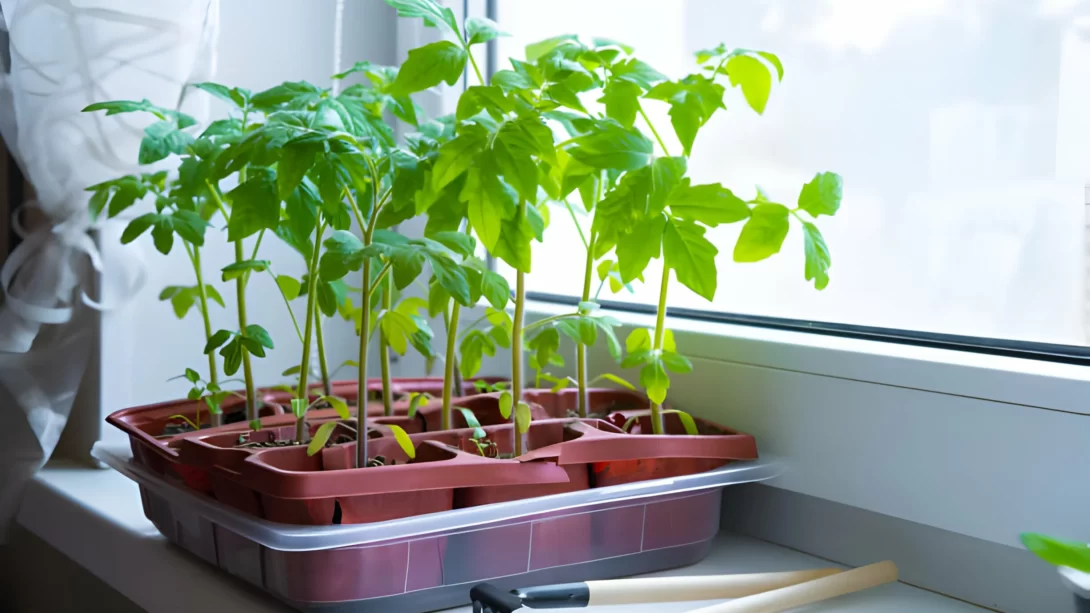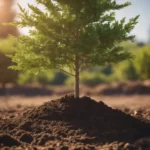For gardeners in USDA Hardiness Zone 7, starting tomato seeds indoors is a crucial step toward a successful and bountiful harvest. Given Zone 7’s unique climate, understanding the right timing and techniques for seed starting can make all the difference. This guide will provide you with detailed information on how to effectively start your tomato seeds indoors, setting the stage for a thriving tomato garden.
Tomato Seed Germination
Tomatoes are a favorite in home gardens, known for their versatility and range of varieties. Successful tomato growth begins with proper seed germination, a process influenced by factors like temperature, moisture, and light. Starting seeds indoors allows for better control over these conditions, ensuring that your tomato plants get the best start possible. Additionally, indoor germination protects the young plants from the variable early spring weather of Zone 7.
Zone 7 Climate and Tomato Growing
Zone 7, encompassing regions with winter lows between 0°F and 10°F (-18°C to -12°C), experiences a moderate climate that is generally conducive to growing tomatoes. However, the last frost date can vary significantly within this zone, typically falling between late March and early April. Understanding your local frost dates is key to timing your seed starting correctly. The climate in Zone 7 allows for a wide variety of tomatoes, but the specific growing window must be considered when selecting varieties.
Determining the Best Time to Start Seeds Indoors in Zone 7
To calculate the ideal seed starting date, count backward from the expected last frost date in your area. Generally, tomato seeds should be started indoors 6 to 8 weeks before the last frost date. For most of Zone 7, this means starting seeds around mid-February to early March. Consider the maturity time of your chosen tomato varieties; early-season varieties may be started at the earlier end of this range, while mid-season or late-season varieties can be started a bit later. It’s also important to account for microclimates within your area, as these can affect local frost dates and temperature trends.
Preparing for Seed Starting
Before sowing your tomato seeds, gathering the right supplies and creating an ideal environment are crucial steps. You will need seed trays or small pots, high-quality seed starting mix, and tomato seeds suited for Zone 7’s climate. Opt for varieties that thrive in your local conditions, considering factors like disease resistance and growth habits. When preparing your seed starting mix, ensure it is light, well-draining, and moistened. Pre-moistening the mix helps seeds adhere and reduces the risk of washing them away during watering.
Seed Starting Process and Care
Begin by filling your seed trays or pots with the pre-moistened starting mix. Sow the tomato seeds at a depth of about 1/4 inch, covering them lightly with soil. Keep the soil consistently moist but not waterlogged. Providing a steady source of light is essential for strong, healthy seedlings. Place the trays in a warm location or use a heat mat to maintain a soil temperature of around 70-75°F (21-24°C), which is ideal for tomato seed germination. Once seeds sprout, ensure they receive plenty of light, either from a sunny window or grow lights, to prevent leggy growth. Regularly check the moisture level and water as needed, allowing the soil surface to dry slightly between waterings.
Transplanting Seedlings into the Garden
As the seedlings grow and the danger of frost passes, the next step is to prepare them for transplanting outdoors. This process, known as hardening off, involves gradually acclimating the young plants to outdoor conditions. Start by placing the seedlings outside for a few hours each day in a sheltered location, gradually increasing their exposure to sunlight and outdoor temperatures over a week or two. This step is crucial in Zone 7 to ensure the plants are not shocked by the change in environment. When seedlings have been properly hardened off and nighttime temperatures consistently stay above 50°F (10°C), they are ready to be transplanted into your garden. Choose a sunny spot with well-draining soil, and space the plants according to the specific needs of the variety.
Ongoing Care and Maintenance
After transplanting, providing consistent care is key to nurturing healthy and productive tomato plants. Water the tomatoes deeply and regularly, allowing the soil to dry slightly between waterings. This promotes strong root development. In Zone 7, mulching around the plants can help retain soil moisture and control weeds. Fertilize the plants with a balanced fertilizer, but avoid over-fertilization, especially with nitrogen-heavy products, as this can lead to lush foliage at the expense of fruit production. As the plants grow, staking or caging them will support the weight of the fruit and promote air circulation, reducing the risk of disease.
Monitoring and Managing Common Pests and Diseases
Tomatoes can be susceptible to pests and diseases, especially in the humid climate of Zone 7. Regularly inspect your plants for signs of pests like aphids, tomato hornworms, and spider mites. Diseases such as blight, powdery mildew, and blossom end rot can also affect tomatoes. Implementing practices like crop rotation, proper spacing, and avoiding overhead watering can reduce these risks. If pests or diseases are identified, treat them promptly with appropriate organic or chemical controls, following all label instructions.
Strategies for Extending the Growing Season and Maximizing Yield
In Zone 7, the growing season can be extended to maximize your tomato harvest. Consider using row covers or cold frames to protect early or late-season plantings from unexpected frost. As the end of the growing season approaches, pruning off new flower clusters can encourage the plant to focus energy on ripening existing fruit. If frost is imminent, harvest any nearly ripe or green tomatoes and ripen them indoors to avoid losing them to cold temperatures.
Conclusion
Starting tomato seeds indoors in Zone 7 sets the foundation for a fruitful growing season. By following these guidelines on timing, seed starting, and plant care, you can enjoy a bountiful harvest of homegrown tomatoes. Gardening is a learning experience, so observe and adapt to the unique conditions of your garden each year. With patience and care, your tomato plants can thrive and produce a plentiful crop. Happy gardening in Zone 7!




